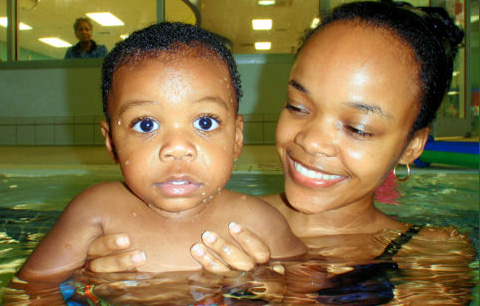
What to do if you think your child isn’t getting what he should be getting from swimming lessons.
Do you ever sit at poolside with the feeling that your child isn’t progressing?
There are several things that affect how your child learns when it comes to swimming. There are some theories that suggest that most 3-5 year olds learn how to swim in twenty to thirty lessons and most 6-9 year olds take eight to twenty lessons. Another popular theory suggests that learning how to swim requires at least 10,000 correct repetitions, or 10,000 strokes in the pool. Of course, it isn’t all about strokes so the second theory is a bit faulty on its surface.
There is no simple answer to this question. There are so many factors and combinations of factors that impact this process that a time frame can only be predicted on a case by case basis.
Consider these factors in analyzing a child’s progress:
1. Frequency of Lessons/Practice
Swimming is proof that practice makes perfect. So it makes sense that the more lessons and practice your child gets, the better the results will be. i.e., Taking two lessons a week will produce stronger results for your child than taking 1 lesson per week.
2. Motivation Level
It should be motivation enough that learning to swim could save their life, but at a young age, a child may not quite get the importance of this. They may need motivation – whether it be a competitive- or fun-related motivator.
3. Past Experiences
If your child has a negative memory that is associated with swimming lessons, it may be difficult for him/her to enjoy swimming. This could be as simple as a scraped knee in the pool. If your child is afraid of the water, he or she may spend half of the lesson screaming and crying and that makes his/her lessons much less effective. Find ways to comfort your child with favorite toys.
4. Class Structure
Perhaps the way the class is set up is a challenge for your child. Sometimes children respond better in an environment where the instructor is strict. Others are stressed by structure and need fun-oriented drills.
This is another area to discuss with your child’s instructor to determine the best resolution. Getting this right puts less stress on your child and will help your child to like swimming lessons – and swimming – better as time goes on.
It may be that none of these factors presents the best solution to your child’s hurdle. After all, you not only want your child to learn to swim, but you also want your child to get the most from your investment in your child’s lessons.
You may compare your child’s performance against other children in the class and feel that your child is behind. Rest assured that nothing is wrong with your child. Every child learns and progresses at his or her own pace. But that doesn’t mean that they can’t occasionally plateau in a level.
Before panic sets in about your child’s progress, try these suggestions to understand what your child’s hurdle may be and help them to get over it and move ahead:
- Talk to the instructor. The first and best thing to do is to talk to your child’s instructor. He/she needs to know that you have concerns and will be mindful of this in monitoring anything unusual that may be going on with your child. They may also ask colleagues (especially those who may have had your child in earlier classes) what advice they may offer.
- Put some extra work in. Get “homework” from the instructor and set time aside for working on skills at home between lessons. You can do extra work at home without a pool.
- Go to public pools. When it’s possible, take your child to a public pools between lessons. It’s amazing what your child can get from playing. They get more comfortable in their water and more confident in how they feel in the water.
- Capture video from your phone. Show your child doing what is frustrating him on video. If they can see it, they may figure out what they’re doing wrong. You can probably find a YouTube video of the correct execution of whatever skill is troubling them so the two of you can watch it being done correctly.
- Set goals. Everyone works better with structure. Setting goals and deadlines for reaching those goals helps you can your child maximize the extra time you’re spending on swimming skills.
- Provide positive encouragement. Even if you are “correcting” what your child may be doing wrong, use positive language and body language to communicate with him. It’s very important to keep your child encouraged and not discouraged.


Conversations